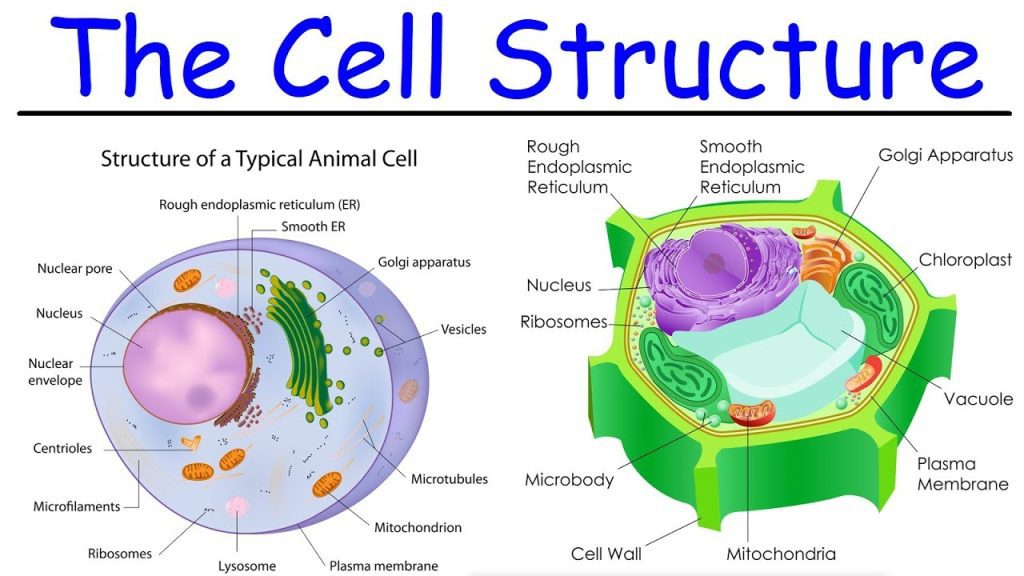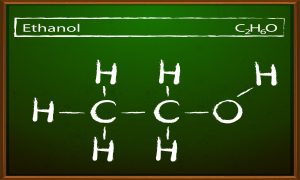Introduction of Cell Biology
Cell biology, also known as cytology, is the branch of biology that studies the structure, function, and behavior of cells. Cells are the smallest units of life, and their study is essential for understanding the complexity of living organisms. From the simplest unicellular organisms like bacteria to the most complex multicellular organisms, such as humans, all life forms are composed of cells.
Table of Contents
ToggleThis field has been instrumental in advancing our knowledge of genetics, molecular biology, physiology, and biochemistry. It encompasses various subfields, including molecular biology, genetics, biophysics, and biochemistry, all of which focus on different aspects of cellular processes and interactions.
The Cell: A Fundamental Unit
Cells are often referred to as the “building blocks of life” because they are the smallest structural and functional unit of living organisms. Each cell contains a variety of components, each performing specific tasks to maintain the cell’s survival and function.
Cells are broadly classified into two categories:
- Prokaryotic cells: Found in unicellular organisms like bacteria and archaea, these cells lack a nucleus and membrane-bound organelles.
- Eukaryotic cells: Found in animals, plants, fungi, and protists, these cells have a defined nucleus and numerous membrane-bound organelles.
Basic Cell Structure
Cells are composed of several essential components, which include:
- Cell Membrane: The cell membrane, also known as the plasma membrane, surrounds the cell, providing structural support and protection. It is a selectively permeable barrier that regulates the movement of substances in and out of the cell. The membrane is primarily composed of a lipid bilayer interspersed with proteins, which allow communication and transport between the cell and its environment.
- Cytoplasm: The cytoplasm is the jelly-like substance within the cell, excluding the nucleus. It contains organelles, nutrients, and enzymes that are vital for cellular activities. The cytosol, the liquid portion of the cytoplasm, is the site of many metabolic pathways, such as glycolysis.
- Nucleus: The nucleus serves as the control center of the cell, housing the cell’s genetic material (DNA). It is surrounded by the nuclear envelope, a double membrane that protects the DNA from damage. Inside the nucleus, the nucleolus is involved in the production of ribosomes, which are essential for protein synthesis.
- Mitochondria: Known as the “powerhouses” of the cell, mitochondria generate energy through cellular respiration. They convert glucose and oxygen into adenosine triphosphate (ATP), the cell’s energy currency. Mitochondria have their DNA, which is maternally inherited, and are thought to have evolved from ancient symbiotic bacteria.
- Endoplasmic Reticulum (ER): The ER is a network of membranous tubules and sacs. It comes in two forms:
- Rough ER: Studded with ribosomes, it is involved in protein synthesis and modification.
- Smooth ER: Lacks ribosomes and is responsible for lipid synthesis, detoxification, and calcium storage.
- Golgi Apparatus: The Golgi apparatus modifies, sorts, and packages proteins and lipids for transport to different parts of the cell or secretion outside the cell. It is often compared to a cellular “post office.”
- Ribosomes: These tiny organelles are the site of protein synthesis. They can be found floating freely in the cytoplasm or attached to the rough ER. Ribosomes read the genetic code from messenger RNA (mRNA) and use it to assemble amino acids into proteins.
- Lysosomes: Lysosomes contain enzymes that break down waste materials and cellular debris. They are the cell’s “digestive system” and are particularly abundant in cells involved in phagocytosis (e.g., white blood cells).
- Cytoskeleton: The cytoskeleton is a dynamic network of protein filaments that provide structural support and facilitate cell movement. The three main components of the cytoskeleton are:
- Microfilaments: Actin filaments are involved in cell movement and division.
- Microtubules: Tubulin filaments that maintain cell shape and are involved in intracellular transport and cell division.
- Intermediate filaments: Provide mechanical strength and support.
- Chloroplasts (in plant cells): Chloroplasts are responsible for photosynthesis, a process that converts light energy into chemical energy stored in glucose. Like mitochondria, chloroplasts have their DNA and are believed to have originated from symbiotic bacteria.
Cellular Functions
The primary functions of a cell include:
- Energy Production and Metabolism: Cells generate energy through metabolic pathways, including glycolysis, the citric acid cycle (Krebs cycle), and oxidative phosphorylation. These processes convert nutrients into usable energy (ATP).
- Protein Synthesis: Cells use the genetic information stored in DNA to synthesize proteins, which perform various structural and functional roles in the cell. Transcription (in the nucleus) and translation (in the cytoplasm or rough ER) are key steps in this process.
- Cell Division and Reproduction: Cells reproduce by dividing, either through mitosis (in somatic cells) or meiosis (in germ cells). Mitosis results in two genetically identical daughter cells, while meiosis produces four genetically distinct gametes (sperm or eggs), essential for sexual reproduction.
- Communication: Cells communicate with each other through signaling molecules such as hormones, neurotransmitters, and growth factors. Cell signaling pathways allow cells to respond to changes in their environment and coordinate actions with other cells.
- Homeostasis: Cells maintain internal stability by regulating factors such as temperature, pH, and ion concentrations. The plasma membrane and organelles like lysosomes and peroxisomes are vital in maintaining cellular homeostasis.
Cell Cycle and Division
The cell cycle is a series of phases a cell undergoes as it grows and divides. It consists of four main stages:
- G1 Phase: The cell grows and synthesizes proteins needed for DNA replication.
- S Phase: DNA is replicated, resulting in two identical copies of the cell’s genetic material.
- G2 Phase: The cell continues to grow, prepares for division, and checks for DNA errors.
- M Phase (Mitosis): The cell divides its chromosomes equally into two daughter cells. Mitosis is followed by cytokinesis, where the cytoplasm is divided.
The regulation of the cell cycle is crucial for growth, tissue repair, and development in multicellular organisms. Uncontrolled cell division can lead to cancer, highlighting the importance of regulatory mechanisms like checkpoints and tumor suppressor genes.
Cellular Communication and Signaling
Cells communicate with their environment and each other via signaling molecules, such as hormones, neurotransmitters, and cytokines. This communication can occur through:
- Direct cell-to-cell contact (e.g., immune cells interacting with pathogens)
- Paracrine signaling (local communication, such as synaptic signaling in neurons)
- Endocrine signaling (long-distance signaling through the bloodstream, as seen with hormones)
- Autocrine signaling (a cell signaling itself)
Receptors on the cell surface or within the cell detect these signaling molecules, triggering a cascade of events that alter cellular function.
Specialized Cells and Tissues
In multicellular organisms, cells differentiate into specialized types with distinct functions, such as:
- Muscle cells: Contract to facilitate movement.
- Nerve cells (neurons): Transmit electrical signals.
- Red blood cells: Transport oxygen to tissues.
- Epithelial cells: Form protective layers and are involved in absorption and secretion.
These specialized cells group to form tissues, which, in turn, combine to form organs, each performing unique roles in the organism.
Conclusion
Cell biology is fundamental to understanding life at microscopic and macroscopic levels. By studying the structure and function of cells, scientists can uncover the mechanisms behind health, disease, and the complex interactions that sustain living organisms. This knowledge has vast applications in medicine, biotechnology, agriculture, and environmental science, making cell biology an indispensable field in modern science.







